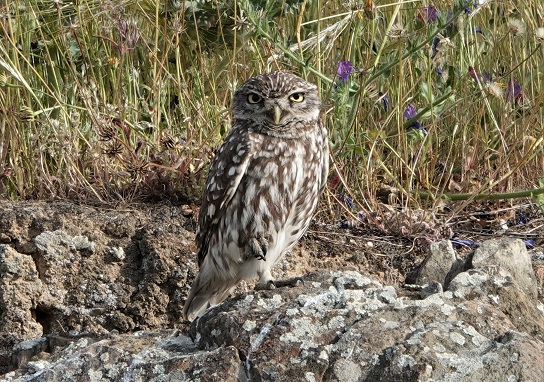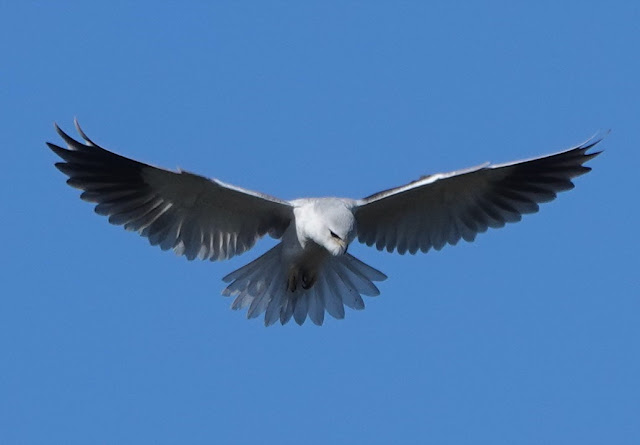Autumn comes in waves
 |
| Autumnn Buttercup (Martin Kelsey) |
This wet and stormy autumn has brought waves of change, dramatic in a way never matched by the unwrapping of spring. Our rewards for leaden skies, racing clouds and rain a-plenty have been a succession of simple, pleasing markers. By mid-October the landscape transformed from beaten and scorched aridity to an almost Celtic green. Late October gave us the white blankets of autumn bulbs in flower: Serotine Narcissus and Autumn Snowflakes. Into November, rocky valley-sides became dusted yellow: a profusion of Autumn Buttercups (Ranunculus bullatus). We pass through abrupt episodes of colour, a race through a second spring, with successive bands of single hues.
And so with the arrival of birds: October witnessed surge in the flow of Common Cranes coming into Extremadura, with concentrations feeding in the damp stubble fields of maize and rice, providing spectacles which have well exceeded those in the last two years, when we suffered autumn droughts. And now, in these days of mid-November, skeins of Scandanavian Greylag Geese, precise arrow-shaped forms, dark against the dullen sky, deep in garrulous conversation, are arriving to feed along with the cranes on the stubble. Their sojourn is shorter, not even the length of winter. Before the end of January, the geese will start again their journey north.
 |
| Greylag Geese (Martin Kelsey) |
Some birds make flying visits. I sat in the vehicle, with Nigel and Muriel, sheltering from the rain as we ate our sandwiches. I had parked in such a way that from where we sat we could see both a shallow bay of the Alcollarín Reservoir, and the small subsidiary pool where a crowd of Great Cormorants splashed in an exurberance of foraging, plunging from the surface and popping-up again with silvery fish clamped in their mandibles. Casually I raised my binoculars in one hand, lunch in the other, and peered through the rain-splattered window to the main bay. There were a few Lapwing and a couple of Little Ringed Plovers. Then entering the field of vew was an energetic pale wader. looking somewhat bigger than the plovers. It struck me as odd, but the combination of distance and visibility meant that I could not immediately identify it. Putting my sandwich down, I stepped out into the rain and set up the telescope. Despite being nearly 400 metres away and with the heavy rain, its identify was immediately obvious. Its rather frenzied, jerky foraging meant phalarope and its plain grey mantle pointed to Grey Pharalope (or Red Phalarope as it is also known).
I wanted to get some photos of this: a rarity in Extremadura and only the second that I had seen in the region, but, confident that the bird would stay for a while, I got back into the car, gave Nigel and Muriel the news and suggested that we finish lunch whilst waiting for the rain to ease. This it did. Although phalaropes are generally extremely confiding, we approached the area where the bird was feeding from behind the cover of a bush-lined ditch and stayed a good distance from it, allowing it to get gradually a bit closer to us, rather than us moving nearer. We were able to watch the bird at length. It was busily foraging the whole time, picking midges off the water surface, spinning round as it swam, its fine bill daintily working away. Sometimes, it entered shallower water, wading or came up onto the shore, where it sauntered on its surprisingly short legs
 |
| Grey Phalarope (Nigel Sprowell) |
Its clean appearance with its smooth grey back and white underparts indicated an adult bird. Up in the Arctic tundra, from whence it hailed, it would have looked very different: brick-red underparts with a white facial mask and dark crown. It migrates to spend a pelagic winter in the Atlantic. Most probably the weather had brought this individual well inland (Alcollarín lies just under 300 km from the Portuguese coast), another consequence of this wet and windy season.
We withdrew and then watched it for longer from the car park. It was foraging furiously and was oblivious to the arrival beside it of a Black Stork: an extraordinary juxtaoposition of birds in the same field of view.
It was seen later that day, but other observers checking the site the following day and subsequently, failed to relocate the bird. How long it had been there before we found it can only be a guess, but I suspect that its stay would have been very brief. I hope, as I write, that this special bird is now bobbing away where it should be, somewhere in the Atlantic Ocean.



Comments